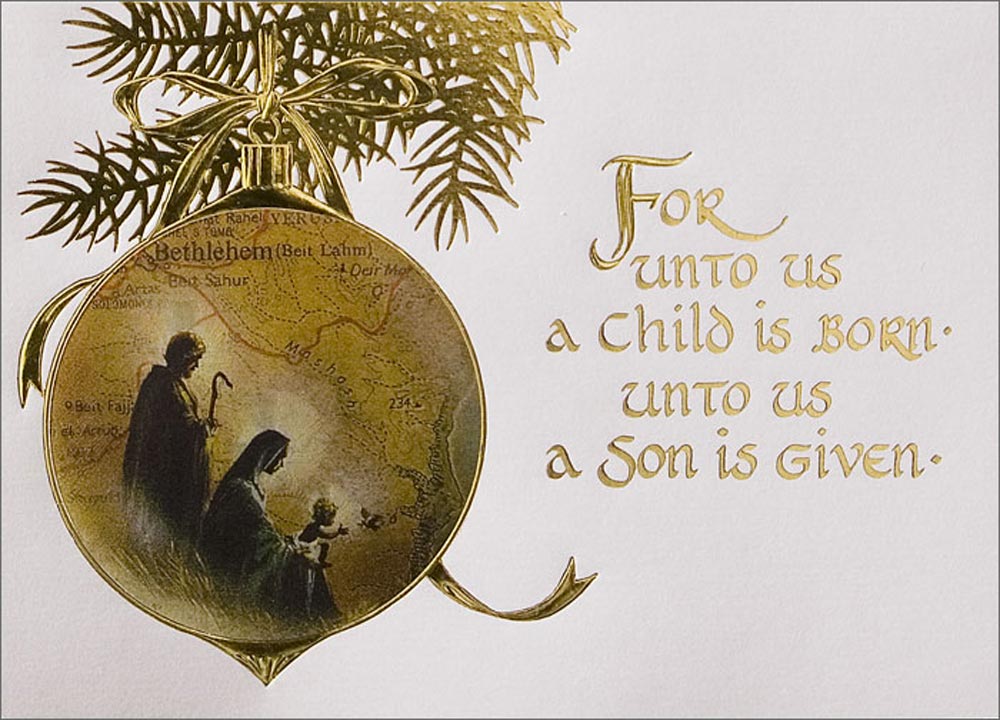You can never solve a problem on the level on which it was created.” Albert Einstein.
The great seasons of Advent and Christmas can be a planning challenge for church leaders as this time of year is fraught with internal tension. Here are just a few challenges we face:
- the overwhelming commercialism of the season beginning at Thanksgiving

- nostalgia for a perceived Christmas of the past
- an increasing secularization making the spiritual rhythms of the Church Year irrelevant
- having only one chance to connect with visitors and engage them with the Gospel
- the external pressure to offer a ‘nice’ Christmas, which often translates as ‘give me the experience I am expecting.’
- the internal pressure to undertake ‘something new’ for fear of offering the ‘same old, same old.’
We know that, if we do not pay attention, when it comes to ministry in this day and age, assumptions can severely limit our Advent and Christmas preparation and community engagement. Unfortunately, after many years of pastoral ministry, I find that forces pushing us toward continuing the status quo often prevail. When this happens we risk losing our evangelistic edge.
 A fundamental question for us to ask ourselves as we plan for Advent and Christmas is “How do we offer an evangelistic experience where everyone we encounter can be engaged by the Gospel?”
A fundamental question for us to ask ourselves as we plan for Advent and Christmas is “How do we offer an evangelistic experience where everyone we encounter can be engaged by the Gospel?”
I would like to offer a few suggestions.
We need to start early and with more reflection, prayer, discussion and thought before planning liturgies, community events or outreach opportunities. To some, the following steps will appear simplistic and cumbersome, but ensuring your fundamentals will help in the long run. It’s too easy and I would argue, non-productive, to rush to a quick solution.
First. Start with a team.
Not a standing committee but a working group—with a specific mandate and a shelf life. It doesn’t matter how small or large your ministry is—planning seasonal ministry with a team is crucial. I suggest that this small team include a Pastor, a musician, someone with a heart for reaching your community, the newest Christian of your church/ministry (they hopefully will not have the ecclesiastical baggage most of us carry), and a person with a bent for organization & coordination. Start as early as possible—prior to September if possible.
Second. With your planning team, check ALL of your assumptions, no matter how obvious they appear.
I would suggest using a white board or flip chart to work through your assumptions, with the aid of a helpful children’s poem by Rudyard Kipling. In his ditty “I Keep Six Honest Serving Men”—a little girl speaks of What, When, How, Where, Who and “seven million Why’s!”. These questions are great planning tools. As your planning group works through them—ask questions from a number of perspectives:
Ask, “What do we want to accomplish this Advent & Christmas?” But also, “What do our visitors expect when they come?” “What does our neighbourhood community expect of our Christian community during this season?” Challenge your core assumptions by simply and intelligently answering “Why Advent/Christmas?” “What is Advent/Christmas?” “So what?” This is not about getting specific answers or pandering to any perspective; but about seeking clarity concerning opportunities, challenges and reality. You are planning ministry that engages people with the Gospel.
Third. Build a picture of what might best engage and involve people in your neighbourhood this Advent and Christmas. This will impact and influence everything from liturgies and sermons, to witness, discipleship and more.
- Use clear language. Is your use of language accessible or are you assuming everyone is a cradle Anglican or Baptist and a mature Christian?
- Articulate the Gospel in whatever forms of ministries you engage in through Advent and Christmas.
- Recognize that the responsibility to build bridges into the neighbourhood now rests on the Church, not the neighbourhood.
- Beware of fundamentalism, liturgical or otherwise, that is often based on “we have always done it this way.”
Fourth. Seek resources, both on-line and in person.
Ask your neighbourhood and other community churches (regardless of denomination) what they do during these seasons. Look around your own denomination and listen for creative and effective ways of Gospel proclamation in Word and deed. Ask questions. Build a knowledge base.
Fifth. Provide follow up and next steps for new people.
Whether through communication cards, personal asks or some tracking system; ensure that you follow up a new connection with a genuine and warm welcome and provide an opportunity for further conversation.
Next steps are crucial as well—perhaps Alpha, Christianity Explored, Christian Foundations or the Pilgrim Course is offered right after Christmas to welcome and address the questions of seasonal visitors.
Some final thoughts.
- Invite the Holy Spirit to move.
- Check your assumptions at the door—seek alignment and clarity.
- Whatever your primary connection—seasonal worship, community carol singing, a nativity play, a Christmas Day dinner, Christmas Care Packages—offer your best.
- Plan for a meaningful, creative, inventive and fresh way to tell the story. Consider the Christmas story from a perspective that resonates with a post-Christendom culture.
- Simplify both your goals and approach.
- Invite the whole congregation to engage the communities in which they live, work and play.
- Get the kids involved. They are brilliant at evangelizing parents and friends.
- Have fun. Take God seriously, but yourself not so much.
- Let the congregation show genuine agape hospitality.
- Include a call to action, with next steps that are clear, articulate and helpful.
- Get contact info. from visitors.
- Follow up.
Allow the Holy Spirit to meet Einstein’s dictum, that the challenges you face in evangelism during Advent and Christmas are more than met with Gospel proclamation in Word, word and deed. Trust that.

